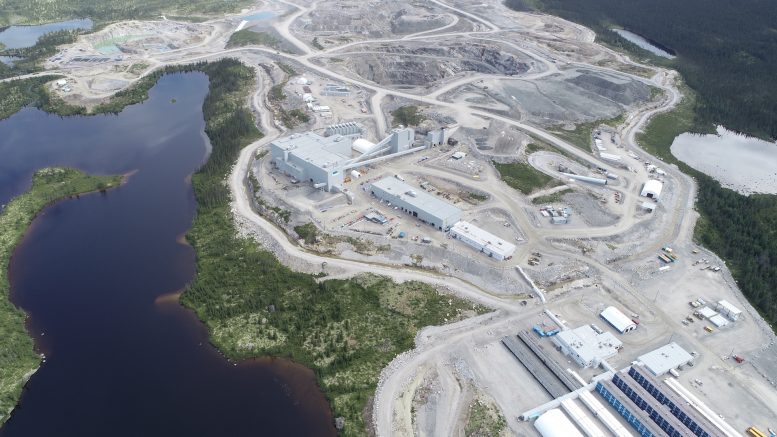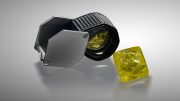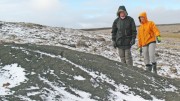Stornoway Diamond (TSX: SWY) and its creditors reached a deal that will see the Renard diamond mine operate during corporate restructuring, after the company’s failure to generate positive free cash flow in 2019.
In October, the Superior Court of Quebec granted Stornoway an approval and vesting order from, a key condition for the company to execute transactions outlined in a letter of intent announced on Sept. 9, the same day it filed for and received protection from the court under the Companies’ Creditors Arrangement Act to pursue restructuring.
The deal will see Osisko Gold Royalties (TSX: OR; NYSE: OR), Diaquem (a subsidiary of government-owned Investissement Québec) and other creditors form an entity to acquire the company and its mine, 350 km north of Chibougamau.
Osisko and its partners will acquire Stornoway via a credit bid, using debt owed as currency in the transaction.
The deal shows the creditors are committed to the project, said independent diamond analyst Paul Zimnisky in a September interview. “It’s nice to see them taking a longer-term view as investors.”
Under the terms of the deal, the acquirers would assume all debt and liabilities owing, and Renard’s ongoing obligations. The partners will also extend a $20-million working capital facility, so that the company can operate Renard and meet short-term financial obligations while restructuring, Stornoway says.
Osisko is contributing $7 million, or 35%, of the working capital fund. It will keep its 9.6% diamond stream on the mine, but will reinvest proceeds from the stream for one year.
“The continued downward pressure on the market price for rough diamonds, as well as a variety of other factors and circumstances,” left the company unable to generate positive free cash flow in 2019, and maintain enough working capital, Stornoway said.
Stornoway reported a $346.3-million net loss for the quarter ending June 30.
The loss came from an impairment charge “driven by decreasing prices of rough diamonds resulting in a write-down of property plant and equipment, right-of-use assets and deferred transaction costs.”
Stornoway generated adjusted earnings before interest, tax, depreciation and amortization (excluding the impairment charges) of $13.1 million, up from $1.6 million in the year-before quarter. The company reported it had $21.3 million in cash on hand.
Stornoway netted an average of US$76 per carat sold in the quarter, down 9% from the first quarter of 2019. In 2018, Stornoway’s diamonds fetched US$93 per carat. An independent prefinancing, bulk-sample evaluation in 2014 estimated Renard’s diamonds would fetch US$147 per carat.
In June, Stornoway’s creditors extended a bridge loan to keep Renard running. The company also formally solicited a restructuring transaction — a sale or investment. No adequate offers materialized.
Pierre Fitzgibbon, Quebec’s Minister of Economic Development and Innovation, told La Presse that Investissement Québec (IQ) pushed creditors for the deal outlined in the LOI, which keeps the mine operating. IQ has lent Stornoway more than $122 million and IQ subsidiary Ressources Québec was Stornoway’s largest shareholder, with a 26% stake representing $180 million invested, La Presse reported.
IQ will hold a 35% stake in the new entity in exchange for $120 million in debt.
Renard hit production in 2017 after raising almost $1 billion, and with support from the government, which spent $300 million on the mine’s 143 km access road.
In 2018, mining moved from open pit to more costly underground extraction, while supply spiked for smaller diamonds (less than 1 carat), which make up two thirds of Renard’s production. The circumstances spelled ruin for the company.
“Now that mining has successfully transitioned underground, the project has been somewhat de-risked, in that respect,” Zimnisky says. “Based on my analysis, I think the company needs a diamond price that exceeds US$100 per carat to be profitable, which will probably require a combination of improved market conditions, but also the recovery of more larger diamonds, which could be driven by the production rampup of Renard 3, and the second underground mining horizon of Renard 2.”
Zimnisky forecasts rough diamond prices will rise by a low, single-digit per cent (net of inflation) in the next two years.
“In general the global supply picture looks pretty good. I am a little more concerned about demand,” he says. “China is key… I would like to see a trade deal of some sort with the U.S. and a de-escalation in Hong Kong. Also, a weaker U.S. dollar would probably help demand.”
He adds: “The industry might be through the worst of the current woes, and with a favourable, industry-wide supply picture going forward, there appears to be a light at the end of the tunnel — if global demand holds.”
On Oct. 18, Stornoway announced that its shares have been delisted from the Toronto Stock Exchange.
– This story first appeared in The Northern Miner and was republished in the November 2019 issue of Diamonds in Canada.





Be the first to comment on "Stornoway’s creditors step in to save Renard"